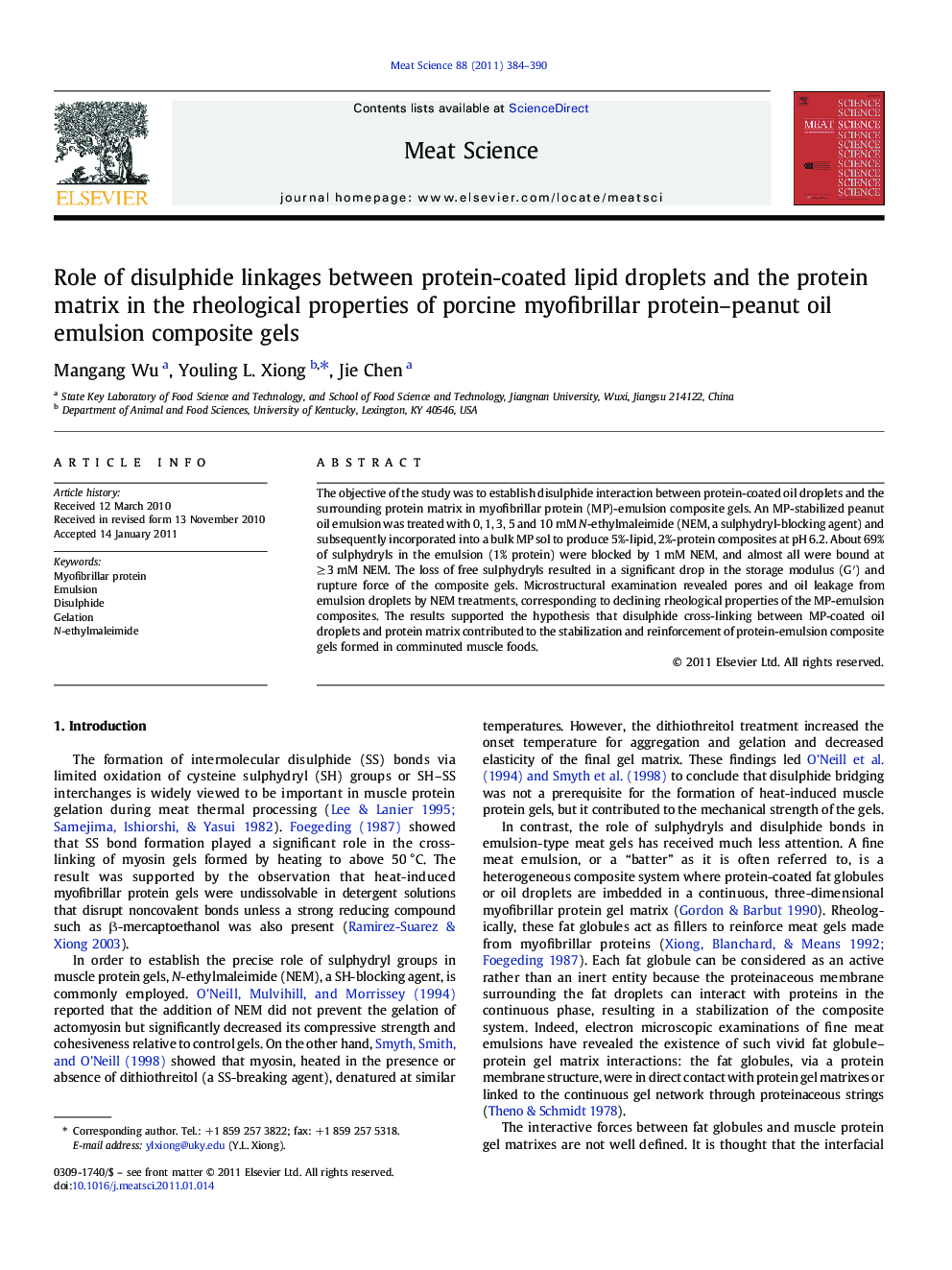| Article ID | Journal | Published Year | Pages | File Type |
|---|---|---|---|---|
| 5792779 | Meat Science | 2011 | 7 Pages |
Abstract
The objective of the study was to establish disulphide interaction between protein-coated oil droplets and the surrounding protein matrix in myofibrillar protein (MP)-emulsion composite gels. An MP-stabilized peanut oil emulsion was treated with 0, 1, 3, 5 and 10 mM N-ethylmaleimide (NEM, a sulphydryl-blocking agent) and subsequently incorporated into a bulk MP sol to produce 5%-lipid, 2%-protein composites at pH 6.2. About 69% of sulphydryls in the emulsion (1% protein) were blocked by 1 mM NEM, and almost all were bound at â¥Â 3 mM NEM. The loss of free sulphydryls resulted in a significant drop in the storage modulus (Gâ²) and rupture force of the composite gels. Microstructural examination revealed pores and oil leakage from emulsion droplets by NEM treatments, corresponding to declining rheological properties of the MP-emulsion composites. The results supported the hypothesis that disulphide cross-linking between MP-coated oil droplets and protein matrix contributed to the stabilization and reinforcement of protein-emulsion composite gels formed in comminuted muscle foods.
Related Topics
Life Sciences
Agricultural and Biological Sciences
Food Science
Authors
Mangang Wu, Youling L. Xiong, Jie Chen,
